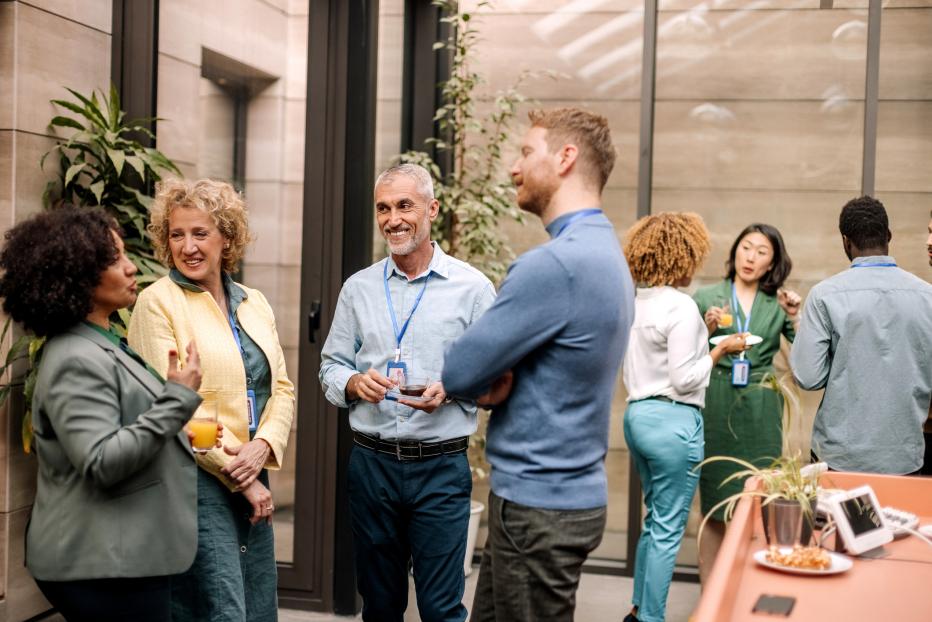
Talker. Negotiator. People person. Cricket coach. I’ve been called many things in my life, but my favorite term is problem-solver. Across my career of 30 years, I’ve worked across several industries outside of engineering consulting, including working in a local authority, staff training organization, recruitment firm, utility company, a call center within an energy organization and a crisis communications role at a leading software vendor. One golden thread ran through them: I constantly engaged and collaborated with people to solve problems.
The longer I’ve worked, the bigger the challenges have become, but conversely, so have the opportunities. All these career experiences and lessons led to my stakeholder engagement role in major projects and programs, most recently major pipelines and carbon capture infrastructure. My talented stakeholder engagement colleagues within Jacobs are leading the way globally, from revolutionary flood-defense programs and transportation upgrades through to pioneering digital cities and urban mobility. All these projects and programs are harnessing the latest in stakeholder engagement technology and the best talent to unlock social value and economic growth.
We’re building some of the greatest long-term infrastructure projects, but they do create some disruption in the short term. I deal with a variety of people daily, including landlords, counselors, government representatives, residents and more, and there is, occasionally, frustration from their lives being disrupted. This is where the power of a one-team approach with partners and stakeholders helps unlock solutions to this short-term disruption. It builds a more resilient foundation for collaboration, and it can help open more opportunities for social value and sustainability.
Over my 30-year long career, I’ve learned six lessons that have become my guiding principles in stakeholder engagement and collaboration across projects, but I believe they can be applied to most, if not all industries.
- Take a moment to digest.
While this advice is especially true in stakeholder engagement, it can help almost any industry. Before you respond to an email or phone call, take a second to understand as much of the context as possible before deciding or acting. It’s like that key first step in applying first aid: check for danger. It’s the same for stakeholder engagement: take on what’s being said, discuss with colleagues if needed, explore the potential consequences and ask what could go wrong before making a decision.
- Do everything with a good heart.
You truly need to believe in what the project aims to achieve — that it will offer positive, sustainable social value for the target communities. If you don’t do it for the right reasons, your heart won’t be in it. This makes it impossible to maintain the work ethic needed to succeed and be sincere in your engagement. The emphasis is always to collaborate and create a one-team approach to solve the issues for better outcomes — but it starts with having the right reasons in place.
- Understanding the underlying motivation is vital.
I often deal with anxious or frustrated people in person and on calls, and it’s essential to take the time to understand why.
On a recent suburban project site, we encountered a frustrated resident on the street we were digging up. We stepped away from the construction site to discuss in a quieter environment free from background noise and dust. The resident and his wife explained they were expecting their first child and were concerned about the project affecting their access to the hospital. Once we understood the potential issue, we put in place a solution where we created a transport plan for the couple to get to the hospital and back with all the doctor and hospital appointment trips organized in advance.
You can’t pay lip service — you need to truly understand people’s concerns, put yourself in their shoes and then create the solutions they need. Humility, empathy, curiosity and honesty are your best tools.
- Listen to the community to unlock innovation.
If you listen carefully, people will give you a great idea without realizing it, especially from a social value or sustainability point of view. On a recent project, some of the community stakeholders had opposed the removal of a few trees in a construction area. As part of ongoing discussions, we became aware of a community request to the local council to provide outdoor seating for community members. We explored the possibility of using the felled trees to create this. So, we built benches from the trees we'd taken down and gifted them back to the community. The best part is that we paid a local charity to make the benches. In short, we turned waste material into community assets and a fundraiser because of an organic conversation. People will always have ideas of how they can improve the environment and add to their community — you just listen and apply creativity.
- Silence isn’t golden in stakeholder engagement.
If you aren’t constantly explaining the ‘what, when, how’ and, crucially, the ‘why’ of a project, then people will start using their imagination to fill the silence, which is not what you want. It’s not just about sharing news; it’s also providing channels and routes for stakeholders to address questions to you. With modern communication tools and social media, news can be spread quickly, both positive and negative, and people are more likely to protest. I’ve found that offering emergency communication channels beyond the traditional formal ones and the 9-to-5 schedule can also help. I’ve gotten texts at night from a member of the local authority sharing an event or issue, asking me questions like: What's your answer to this? How will you deal with this? As a team, we’d then provide the answers they’re looking for, empowering them to share the news with their community as an ambassador.
A big part of our success here relies on our bespoke set of cutting-edge engagement tools. They offer new channels for communication and consultation and empower us to safely and responsibly store anonymized, aggregated stakeholder data. This makes it much easier to build relationships, drive collaboration and unlock project-wide insights.
- Cultural respect is critical for true collaboration.
Part of our secret sauce at Jacobs is having instant access to the best talent and experience in the world — no matter the address. However, that’s only table stakes when it comes to collaboration, as we also need to get the best out of our external partners, and this is where creating a one-team approach is critical for success.
This is where cultural values and respect play an integral role. Creating strong relationships relies on understanding partners, their people and their cultural values, and then, crucially, helping them to understand ours. We then build on that common ground with a set of shared values for a stronger, more symbiotic relationship. It’s about making everyone feel valued on a project, and that relies on working and socializing together and creating a one-team mindset — regardless of the company name on your hard hat. It’s also about building a psychologically safe environment where employees feel secure about speaking up.
It's also about understanding your own background and appreciating the biases and influences you may have. Once again, it’s about never assuming anything: I’m a white, middle-aged male with a different background from my co-workers and stakeholders, so I need to be respectful and ready to learn and appreciate the differences. It’s about replacing ignorance with curiosity. As a secondary benefit, it also means we continue to learn and evolve as people. We don’t, and won’t, agree on everything, but we can learn to understand the motivation behind the reasoning.
These lessons have helped me to solve many short-term challenges within long-term infrastructure projects, but my biggest takeaway is that success relies on relationships. It’s about earning trust through empathy and collaboration and then using storytelling and technology to help create and share the bigger picture — the why behind your project that highlights the social, economic and environmental value. The blueprint for getting all of this right is using the art of conversation to connect and collaborate with stakeholders to make the right changes happen and unlock more opportunities.
About the author

Matt Nebbett has over 30 years' experience in stakeholder engagement across several industries, including working in engineering consulting, staff training, software development, recruitment, utilities, call centers and local authorities. Now he’s applying his signature communication and problem-solving skills to help solve the greatest infrastructure challenges for Jacobs.














































